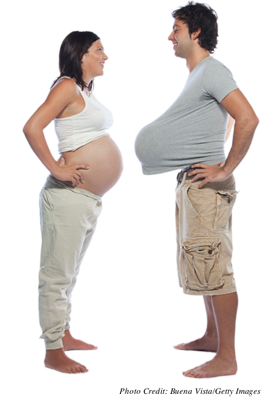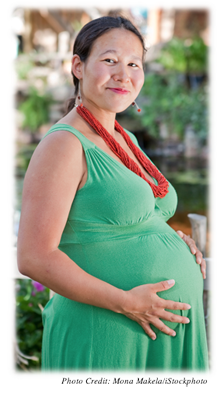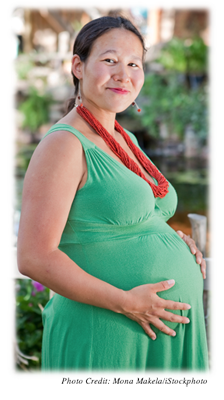
Chapter 1. The Experience of Pregnancy
Synopsis
The Experience of Pregnancy
Author

Jean Raniseski, Alvin Community College
S. Stavros Valenti, Hofstra University
Synopsis
This activity discusses the general experience of pregnancy and details the experience of each of the three trimesters that make up the nine months of gestation, which is the time during which a fetus develops in the mother’s womb.
REFERENCES
Condon, J. T., Boyce, P., & Corkindale, C. J. (2004). The first-time fathers study: A prospective study of the mental health and well-being of men during the transition to parenthood. Australian & New Zealand Journal of Psychiatry, 38, 56–64.
DiPietro, J. A., Ghera, M. M., & Costigan, K. (2004). Measuring the ups and downs of pregnancy stress. Journal of Psychosomatic Obstetrics & Gynecology, 25, 189–201.
Glazier, R. H., Elgar, F. J., Goel, V., & Holzapfel, S. (2004). Stress, social support, and emotional distress in a community sample of pregnant women. Journal of Psychosomatic Obstetrics & Gynecology, 25, 247–255.
King, S., & Laplante, D. P. (2005). The effects of prenatal maternal stress on children’s cognitive development: Project ice storm. Stress: The International Journal on the Biology of Stress, 8, 35–45.
Kroelinger, C. D., & Oths, K. S. (2000). Partner support and pregnancy wantedness. Birth: Issues in Prenatal Care, 27, 112–119.
Yali, A. M., & Lobel, M. (2002). Stress-resistance resources and coping in pregnancy. Anxiety, Stress & Coping, 15, 289–291.
Gestation and Trimesters

Gestation, more commonly known as pregnancy, typically lasts between 266 and 277 days, which is approximately nine months. Specialists have divided pregnancy into three segments. Each segment, or trimester, lasts approximately three months. The first through the third month make up the first trimester. The second trimester is comprised of the fourth through the sixth month. The seventh through the ninth month of pregnancy constitutes the third trimester.
The experience of pregnancy varies greatly from one woman to the next as well as from one trimester to the next. In this activity, you will hear from a variety of women as they speak about their pregnancies.
The First Trimester of Pregnancy

The mother’s first trimester of pregnancy often begins with many of the following symptoms: nausea, feeling faint, having headaches, the need to urinate frequently, fatigue, increased breast size, glowing skin or acne, mood swings, and the cessation of the menstrual cycle. Women often believe that they have the flu or a virus only to find out that what they really have is a baby!
A pregnant woman is not always alone in the physical symptoms of her early pregnancy. Sometimes, an expectant father goes through couvade syndrome which means that he experiences “sympathetic pregnancy” and actually feels similar symptoms to the woman’s in his own body.
A Range of Emotions

A variety of emotions ranging from feelings of joy and excitement to feelings of anxiety and fear may accompany a woman’s discovery that she is pregnant. Since each reaction to the news that a baby is on the way is completely unique and individual, there is no “right” or “wrong” way to react. Also, consider that while pregnancies are exciting, they are not always planned.
Take some notes about this couple’s description of the first trimester of pregnancy for reference later in this activity. Note the mother’s description of her experience in comparison to the father’s.
The Second Trimester of Pregnancy

The second trimester, which covers months four through six, brings with it a new range of physical sensations and emotions. It is during this time that women typically gain additional weight and begin “showing” their pregnancy to the world.
By the 18th week of pregnancy, women are usually able to feel movement within their uterus. Quickening is a bubbly feeling inside the woman’s body that is her first sensation of the fetus moving. It is at this point that some women come to feel that the pregnancy experience becomes the most real.
Play the video to find out about the second trimester. Make some notes on the most prevalent experiences as described by these women.
The Third Trimester of Pregnancy

During the third trimester, the fetus is nearing full size and so is the mother’s stomach. As a result, women in their third trimester will often experience backaches, leg cramps, heartburn, indigestion, a relentless need to urinate, difficulty getting comfortable in bed and being able to sleep, and trouble sitting down and getting back up from chairs or couches.
The third trimester is not all bad. In the excitement of preparing for the baby’s arrival, parents tend to fall more and more toward love with the growing baby every day. These positive feelings go a long way in helping the fetus develop physically and cognitively to its fullest potential. A healthy and happy mother is more likely to have a happy and healthy baby.
Assessment: Check Your Understanding

1.
1. Gestation lasts three months.
Assessment: Check Your Understanding
2.
2. Most pregnant women will experience couvade syndrome at some point during their pregnancy.

Assessment: Check Your Understanding
3.
3. Morning sickness is most likely to first occur:

Assessment: Check Your Understanding
4.
4. Quickening refers to the bubble-like sensations that pregnant women experience during the:

Assessment: Check Your Understanding
5.
5. Consider the couples in the video clips that you have watched throughout this activity. Refer to your notes and what you have learned, and summarize the main experiences of pregnancy for each trimester.
- Second trimester may include the first sensations of the fetus’s movement inside the mother’s body (quickening) and the woman’s enlarging stomach. As the pregnancy becomes visible to the outside world, pregnant women deal with the curiosity and excitement other people have toward the impending birth. At this point, the pregnancy may begin to feel more real to the parent(s).
- Third trimester may include the woman’s need to organize and create a nest for the soon-to-appear newborn, making decisions about the details of delivery and hospital stay, and physical symptoms involved with carrying a large, almost full-term baby, such as limited mobility, backaches, leg cramps, heartburn, indigestion, frequent urination, difficulty with sleep, and difficulty sitting down and/or getting up. Thinking about the responsibility of being so close to having a baby may cause anxiety but certainly some excitement and anticipation.

Congratulations! You have completed this activity. Total Score: x out of x points (x%) You have received a provisional score for your essay answers, which have been submitted to your instructor.